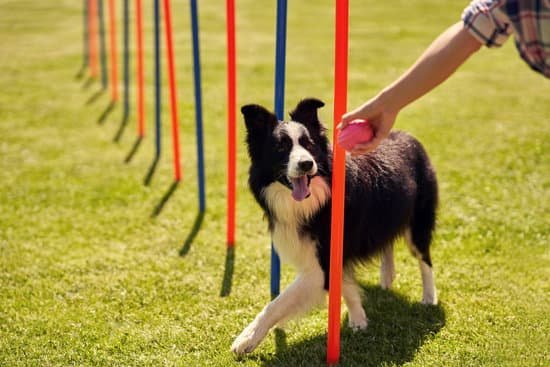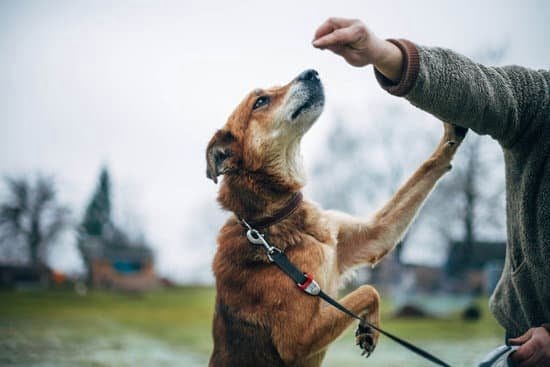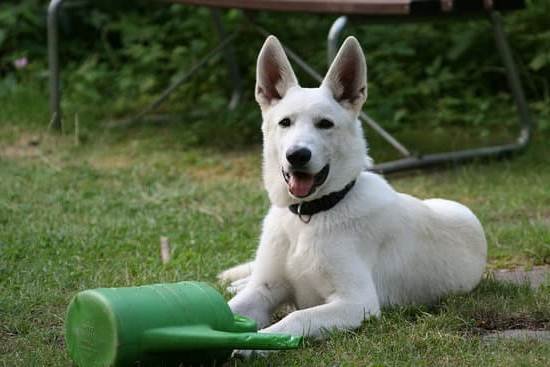Training a dog against bad behavior is an essential part of responsible pet ownership. Whether you have a new puppy or an older dog, it’s important to establish clear rules and boundaries to ensure a well-behaved and happy furry companion. In this article, we will discuss the importance of training a dog against bad behavior and provide tips on how to effectively address and correct these issues.
Dogs exhibit various behaviors that may be considered undesirable, such as barking, chewing, jumping, or even aggression. It’s crucial to understand the common issues and recognize the need for intervention to prevent these behaviors from becoming problematic. By identifying and addressing bad behavior early on, you can create a harmonious relationship with your canine friend.
Positive reinforcement training is one of the most effective methods for teaching your dog good manners. Using treats and praise to encourage good behavior can help shape their conduct in a positive way. Additionally, consistency is key when it comes to setting clear rules and boundaries for your dog. Establishing a routine and providing structure can help your pet understand what is expected of them.
Identifying Bad Behaviors in Dogs
Bad behavior in dogs can manifest in various ways, from barking excessively to destructive chewing. It is essential for dog owners to be able to identify these behaviors in order to effectively address and train their pets. By understanding the common issues, pet owners can implement the right training techniques and strategies to curb bad behavior.
Common bad behaviors in dogs include excessive barking, aggressive behavior towards people or other animals, chewing on furniture or personal items, jumping on people, and disobedience. These behaviors can often stem from boredom, lack of exercise, anxiety, or a lack of proper training. Recognizing these behaviors early on will allow dog owners to take proactive steps towards correcting them.
Common Bad Behaviors in Dogs
- Excessive Barking
- Aggressive Behavior Towards People or Other Animals
- Chewing on Furniture or Personal Items
- Jumping on People
- Disobedience
Once the specific bad behaviors have been identified, dog owners can then focus on implementing targeted training methods and techniques designed to address and correct these issues. Positive reinforcement training is an effective approach that involves rewarding good behavior with treats and praise. This method teaches dogs to associate positive actions with rewards, encouraging them to exhibit good behavior consistently.
In addition to positive reinforcement training, consistency is key in establishing clear rules and boundaries for your dog. This includes setting limitations on where the dog is allowed to go within the house, what items they are allowed to chew, and how they should interact with individuals and other animals. Consistently enforcing these rules will help prevent bad behavior from occurring.
Positive Reinforcement Training
Understanding the Power of Positive Reinforcement
Dogs respond well to positive reinforcement because it creates a strong association between good behavior and rewards. When a dog performs a desired behavior, such as sitting on command or walking nicely on a leash, they receive a treat or praise. This creates a positive experience for the dog and increases the likelihood that they will repeat that behavior in the future.
Training Techniques Using Positive Reinforcement
One common technique for using positive reinforcement is known as “clicker training.” This involves using a small device called a clicker to create a distinct sound when your dog performs a desired behavior, followed by giving them a treat. Over time, the sound of the clicker becomes associated with receiving a reward, making it an effective tool for teaching new commands and behaviors.
Another technique is known as “luring,” where you use food or treats to guide your dog into performing specific actions, such as sitting or lying down. Once your dog successfully completes the action, you reward them with the treat. This method helps to motivate dogs to learn new behaviors while maintaining their focus and interest.
Using positive reinforcement training can be highly effective in teaching your dog good behavior while strengthening your bond with them. By consistently rewarding desirable behaviors with treats and praise, you can encourage your dog to make positive choices and reduce bad behaviors over time. However, it’s important to remember that each dog is unique, so patience and consistency are key when using this training method.
Consistency Is Key
When it comes to training a dog against bad behavior, consistency is crucial in establishing clear rules and boundaries. Dogs thrive on routine and structure, so it’s important to set firm guidelines for their behavior from the beginning. Whether you’re addressing barking, jumping, or other unwanted behaviors, maintaining consistency will help your dog understand what is expected of them.
Here are some key ways to establish clear rules and boundaries for your dog:
1. Set clear expectations: Define what behaviors are acceptable and which ones are not. Consistently reinforce these expectations through training sessions and daily interactions with your dog.
2. Use the same commands: Whether you’re teaching your dog to “sit,” “stay,” or “come,” use consistent commands to avoid confusion. This will help your dog understand what is being asked of them and respond accordingly.
3. Stick to a regular schedule: From feeding times to walks and playtime, maintaining a consistent daily routine can help prevent anxiety and reduce the likelihood of bad behavior in dogs.
By implementing these strategies, you can effectively communicate with your dog and establish a harmonious relationship based on mutual understanding and respect. Remember that training a dog against bad behavior takes time and patience, but with consistency, you can set your furry companion up for success in the long run.
Correcting Bad Behavior
When it comes to correcting bad behavior in dogs, redirection and deterrent methods can be effective tools for addressing issues. Whether your dog is displaying behaviors like chewing, jumping, or leash pulling, utilizing these techniques can help encourage better behavior. Below are some strategies on how to use redirection and deterrent methods to train a dog against bad behavior.
Redirection Techniques
One way to correct bad behavior in dogs is by redirecting their attention to more appropriate activities. For example, if your dog is chewing on furniture, provide them with a chew toy instead. When they start digging in the yard, redirect their focus by throwing a toy for them to chase. By consistently redirecting their behavior towards positive alternatives, your dog will learn what behaviors are acceptable and rewarding.
Deterrent Methods
Deterrent methods involve creating unpleasant associations with certain behaviors, discouraging the dog from repeating them. For instance, if your dog barks excessively at the doorbell, you can use a deterrent like a noise-making device that goes off when they bark, making the experience less enjoyable for them. Another example is using bitter sprays on furniture or household items to deter chewing. Over time, these deterrents can help dissuade dogs from engaging in unwanted behaviors.
Consistency and Patience
It’s important to note that correcting bad behavior takes patience and consistency. Reinforcing positive behavior while redirecting or using deterrent methods requires ongoing effort and commitment. It’s essential to be patient with your dog and understand that training takes time. Consistency in applying these techniques will ultimately lead to better results in addressing bad behavior.
By implementing redirection and deterrent methods while maintaining patience and consistency, you can effectively train a dog against bad behavior. These approaches can help create a harmonious environment for both you and your pet while promoting positive habits and behaviors.
Exercise and Mental Stimulation
Dogs, like humans, need regular exercise and mental stimulation to stay healthy and happy. A lack of physical activity and mental engagement can lead to bad behavior in dogs, such as excessive barking, destructive chewing, or hyperactivity. It’s important for dog owners to understand the link between exercise, mental stimulation, and their pet’s behavior.
One of the most effective ways to prevent bad behavior in dogs is to ensure they get enough physical exercise. The amount of exercise needed varies depending on the dog’s breed, age, and size.
For example, high-energy breeds like Border Collies or Huskies may require more intense exercise sessions compared to smaller breeds like Chihuahuas or Pugs. Regular walks, playtime at the park, or engaging in interactive games like fetch can help burn off excess energy and prevent behavioral issues.
In addition to physical exercise, mental stimulation is crucial for preventing bad behavior in dogs. Mental stimulation can come in many forms, such as puzzle toys, obedience training sessions, or practicing tricks and commands. Dogs that are mentally stimulated are less likely to exhibit destructive behaviors out of boredom. By providing both physical exercise and mental stimulation, dog owners can create a balanced routine that helps prevent bad behavior in their pets.
| Physical Exercise | Mental Stimulation |
|---|---|
| Regular walks | Puzzle toys |
| Playtime at the park | Obedience training sessions |
| Interactive games (fetch) | Practicing tricks and commands |
Seeking Professional Help
If you’ve exhausted all your efforts in trying to train your dog against bad behavior and still find no success, it might be time to seek professional help. A dog trainer or behaviorist can provide the expertise and guidance needed to address more persistent issues and help improve your dog’s behavior. They have the knowledge and experience to assess your dog’s behavior, identify underlying causes, and create a customized training plan to address the specific issues.
One of the signs that it may be time to consider hiring a professional is when your dog’s bad behavior poses a risk to themselves or others. Aggression, excessive fearfulness, destructive behaviors, or compulsive behaviors are all serious issues that may require specialized intervention. Additionally, if you’ve tried various training methods without seeing any improvement in your dog’s behavior, seeking professional help can provide new insights and approaches that may be more effective.
Professional trainers or behaviorists often have formal education and certification in animal behavior and training. They can offer expertise in understanding canine behavior and communication, as well as proven techniques for modifying unwanted behaviors. Their knowledge can help identify the root cause of the problem and develop a training plan that addresses it effectively.
Important Contacts for Professional Training
| Organization | Contact Information |
|---|---|
| Association of Professional Dog Trainers | www.apdt.com / [email protected] |
| International Association of Animal Behavior Consultants | www.iaabc.org / [email protected] |
| Certification Council for Professional Dog Trainers | www.ccpdt.org / [email protected] |
Seeking professional help is not an admission of failure but rather a step towards providing the best care for your dog. With their assistance, you can gain valuable insights on how to train a dog against bad behavior using personalized strategies tailored to your pet’s needs. Remember that every dog is unique with individual challenges, so enlisting the help of a professional can make all the difference in achieving long-term behavioral improvement.
Conclusion
In conclusion, training a dog against bad behavior is an essential part of being a responsible pet owner. By understanding the common issues and utilizing positive reinforcement training, consistency, and corrective methods, you can effectively address and prevent bad behavior in your furry companion. It’s important to remember that this process requires patience and perseverance, but the rewards are well worth the effort.
By investing time and effort into training your dog, you will establish a strong bond based on mutual respect and trust. Your dog will become a well-behaved and enjoyable companion, making both your lives more fulfilling. Additionally, proper training can enhance the safety of your pet as well as others around them. A well-trained dog is less likely to exhibit aggressive or destructive behavior that could potentially harm themselves or others.
If you find that despite your best efforts, you are struggling to train your dog against bad behavior, don’t hesitate to seek professional help. A qualified dog trainer or behaviorist can provide valuable guidance and support to address any persistent issues.
Remember, every dog is unique, and some may require additional help beyond what an owner can provide alone. With dedication and the right resources, it is possible to guide any dog towards better behavior for a harmonious living environment.
Frequently Asked Questions
How Do You Calm Down a Misbehaving Dog?
Calming down a misbehaving dog involves staying calm and using positive reinforcement. Redirect their attention to a toy or a command they know well. Consistency, patience, and understanding are key.
How Do You Train a Dog to Stop Bad Behavior?
Training a dog to stop bad behavior requires a combination of positive reinforcement, redirection, and consistency. Use rewards for good behavior and redirect them when they start exhibiting the unwanted behavior.
What Calms Aggression in Dogs?
Calming aggression in dogs involves identifying the root cause of the aggression – fear, territorial behavior, etc. Desensitization training, proper socialization, and seeking professional help if necessary can help calm aggression in dogs.

Welcome to the blog! I am a professional dog trainer and have been working with dogs for many years. In this blog, I will be discussing various topics related to dog training, including tips, tricks, and advice. I hope you find this information helpful and informative. Thanks for reading!





